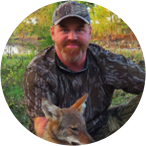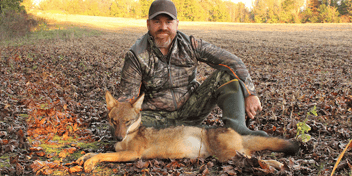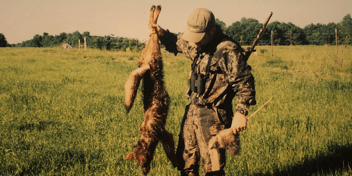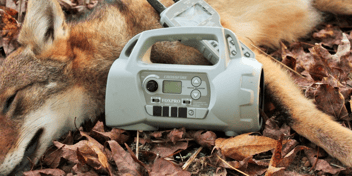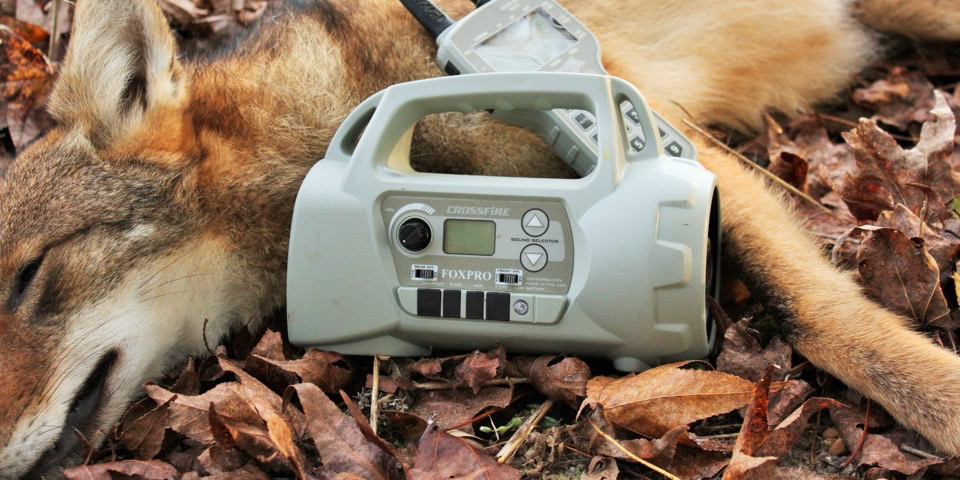
With the sun at our back, a good friend and I plopped down on the edge of thicket bordering a powerline right of way. We had spotted two coyotes top the hill and go out of sight just moments before we made a mad scramble down the hill to the field edge to set up. We belted out a medley of canine howls to sound like a couple of intruders that had slipped into the pair's territory.
A few minutes later, as we sat wondering if our opportunity had passed, the coyote pair came back over the hill and quickly made their way in to investigate. Neither coyote slowed down during the whole approach. They were eager, continuing a steady trot to confront the intruders. When they finally strolled to within a hundred yards, the pair split up and began to flank our calling set. They were working together, a tactic they had no doubt employed countless times before. When the big male closed to within 50 yards, we barked to stop him for the shot, and the deed was done. The female had swung wide of our location and managed to escape death on that particular day.
The hunt served as a great example of how effective canine vocals can be during the coyote breeding season.
The beginning of a new year means coyotes are once again on the prowl in search of a mate, ushering in some of the best days of the year for calling coyotes. It's at this time of year that I often switch to canine vocals as my go-to calling sounds rather than prey distress sounds. Although it varies depending on what part of the country you call home, the coyote's breeding season typically takes place from January to March. This makes coyote vocals the ideal sounds for coyotes seeking out a mate, as well as pairs defending their dens and home turf.
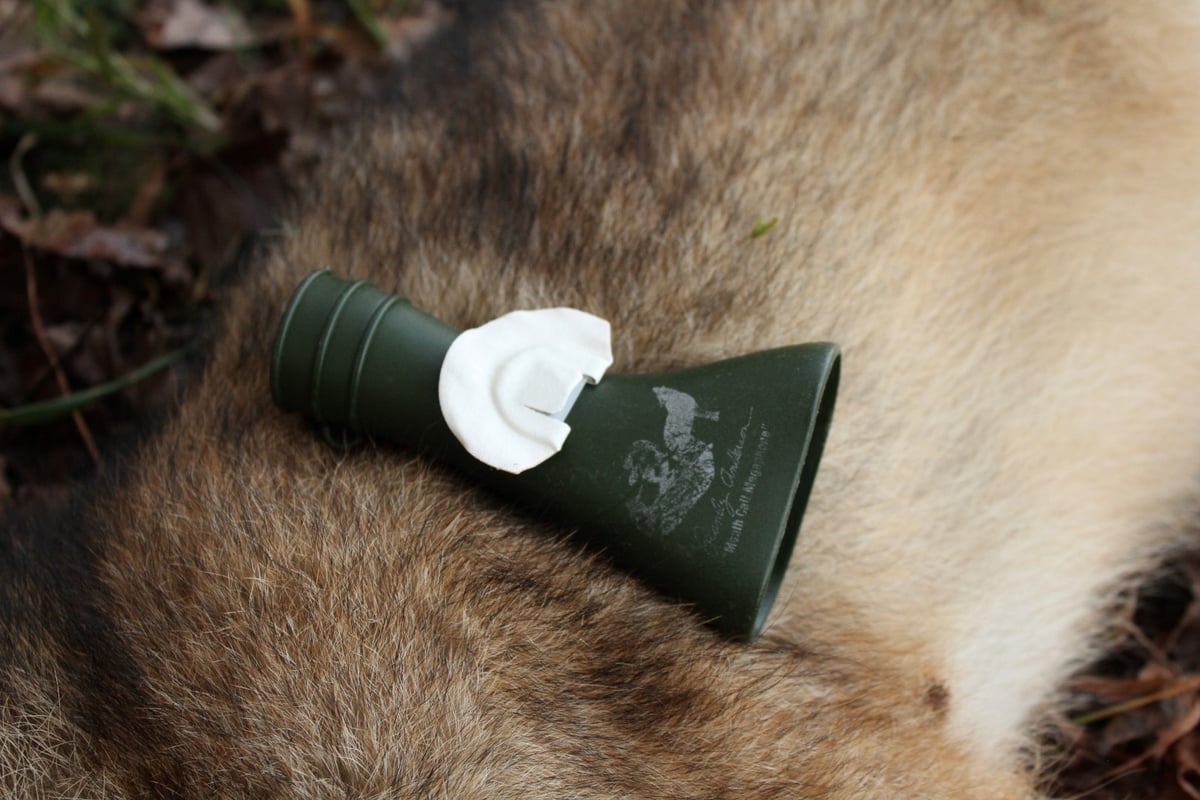
Canine sounds are easily achieved by blowing a mouth call through a howler horn. These are the tools for making the ideal calls for the coyote breeding season.
Looking for Love
Male coyotes in search of a female for the breeding season are particularly vulnerable to female invitation howls. When you produce the sound of a potential mate for a lonely male, he is very likely to come to investigate. As you might expect, female howls are higher pitched and cleaner than male howls, just like a man's voice compared to a woman's voice.
You can also add female whimpers into your calling routine at this time of the year. The female whimper is a submissive sound of the female as she prepares to be bred, or submits to a male companion. It's almost like the whimper of a concerned or distressed dog, but without the desperation. Think of how a domestic dog whimpers when it has been told to stay, but it would rather be with its master. The female coyote whimper sound paints a picture in a lonely male's mind that he rarely can resist.
Calling the Pair
As the breeding season progresses and males and females pair up, you can consider shifting your calling sounds to key in on the territorial instincts of the pair. Like domestic dogs, coyotes are very territorial. They will defend their home turf, even to the death. You will often call in pairs at this time of the year as the male and female both respond to the sounds of an intruder. They'll spend much of their time together, hunting, breeding, and defending their domain.
Use coyote pair howls at this time to paint a picture of another coyote pair slipping in too close. The pair will often come to check things out and confront the situation. Even at this time, I like to use younger male sounds. I want to sound like a male, just not the biggest, baddest dog that ever walked the earth. You can intimidate other coyotes by sounding too old and aggressive.
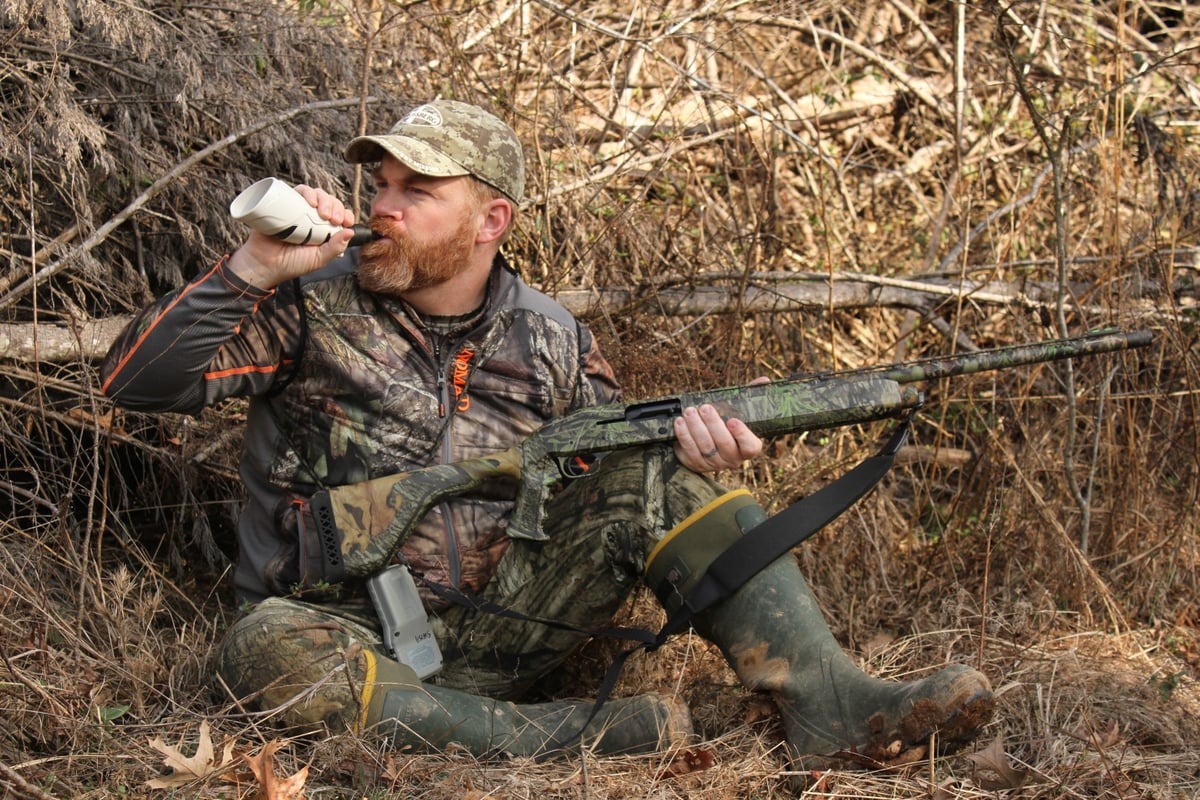
Using a howler to locate and call coyotes is a deadly tactic during the breeding season. The author is pictured here with the Mossberg 930 pistol grip shotgun.
Making the Shot
Calling in a pair of coyotes during the breeding season means your shot opportunities have just doubled. But it's important to pay attention to the pair's approach. I've often watched the male come straight to the call while the wise female circles downwind to check things out. A lot of hunters would just start blazing at the first coyote to get within range, but I always recommend shooting the more passive coyote first. It'll typically be the female. She's more cautious and less likely to come back in once shots have been fired. However, that more aggressive male coyote is far more likely to be stopped with bark for a second shot, or to be called back in with canine distress sounds after you shoot the first coyote. If you play your cards right, you can get a double when a breeding pair responds to your calls.
Killing coyotes during the breeding period can be a fun and exciting time as the action is often fast and furious. You'll see more coyotes and enjoy better-calling success now than at any other time of the year. The canine sounds are the sounds for success when hunting the coyote breeding season. Put them to work for you and watch your numbers rise.
About the Author
